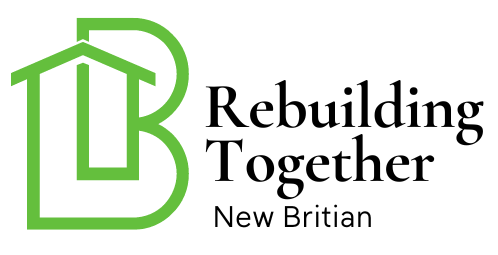Creating an inclusive environment in our homes is not just a legal necessity but also a moral obligation. With ADA-compliant color contrast design, homeowners can ensure that their living spaces are accessible to everyone, including those with visual impairments. In this article, we will delve into the intricacies of ADA-compliant color contrast design, offering insights and practical tips for homeowners aiming to create accessible and welcoming spaces.

Understanding ADA Compliance and Its Importance
The Americans with Disabilities Act (ADA) set forth standards to ensure that individuals with disabilities have equal access to public spaces. Although primarily focused on public buildings, these standards are increasingly applied to residential environments. ADA-compliant color contrast design plays a crucial role in making spaces more navigable for people with low vision.
What is Color Contrast?
Color contrast refers to the difference in luminance or color that makes an object distinguishable from other objects and the background. Proper contrast is essential for readability and usability, especially for individuals with visual impairments.
Why is Color Contrast Important for Accessibility?
High contrast between text and background enhances readability, enabling people with visual challenges to perceive and understand the content more easily. This is particularly important for older adults and those with color blindness or other vision deficiencies.
Key Elements of ADA-compliant Color Contrast Design
Contrast Ratio
The contrast ratio is a measure of the difference in light between text and its background. According to the Web Content Accessibility Guidelines (WCAG), a minimum contrast ratio of 4.5:1 is required for normal text, and a ratio of 3:1 for large text.
Choosing the Right Colors
Selecting appropriate color combinations is vital. Use tools like color contrast analyzers to ensure that your choices meet ADA standards. Avoid using colors that are too similar, as they can be difficult to differentiate.
Text and Background
Ensure there is sufficient contrast between the text and background. This can be achieved by using dark text on a light background or vice versa. For instance, a black text on a white background is a classic high-contrast example.
Practical Tips for Homeowners
Assess Your Home’s Current Design
Begin by evaluating your home’s existing color scheme. Identify areas that may not meet ADA contrast requirements and prioritize changes in high-traffic or essential areas like kitchens and bathrooms.
Use Contrast Analyzers
Utilize online tools such as contrast ratio calculators to test your color combinations. These tools help ensure that your color choices are compliant.
Incorporate Contrast in Key Areas
Focus on areas where contrast is most needed, such as staircases, doorways, and light switches. Applying contrasting colors in these areas can significantly enhance accessibility.
Case Studies: Successful ADA-compliant Designs
Residential Success Stories
Many homeowners have successfully implemented ADA-compliant color contrast design in their homes. For instance, one family utilized contrasting colors in their open floor plan to create distinct zones, aiding navigation for a visually impaired family member.
Public Spaces Setting Examples
Public buildings like libraries and community centers often lead the way in accessible design. By observing these spaces, homeowners can gather inspiration for their own homes.
The Role of Technology in Color Contrast Design
Tools and Apps
Several digital tools and apps are available to assist in selecting ADA-compliant color schemes. These technologies provide real-time analysis and suggestions to help homeowners make informed decisions.
Virtual Reality and Design
Virtual reality technology is emerging as a valuable resource in accessible design, allowing users to experience spaces as someone with a visual impairment would, aiding in better design decisions.
ADA-friendly backyard ideas
While focusing on interior design, don’t forget the exterior. Accessible pathways and contrasting colors in outdoor spaces can create a welcoming environment for all.
Challenges in Implementing ADA-compliant Design
Balancing Aesthetics with Functionality
One of the main challenges is maintaining a balance between aesthetic appeal and functional accessibility. Homeowners may need to compromise on certain design elements to achieve compliance.
Cost Considerations
Implementing ADA-compliant color contrast design may involve costs, particularly if major renovations are required. However, the long-term benefits of accessibility often outweigh these initial expenses.
ADA-compliant curtain rods
Consider the smaller details, such as curtain rods and other fixtures, which can also benefit from thoughtful design and contrast considerations.
Ensuring Long-term Compliance
Regular Reviews and Updates
Accessibility is not a one-time project. Regularly reviewing and updating your home’s design to meet evolving standards and needs is crucial for maintaining compliance.
Engaging with Professionals
Consulting with design professionals who specialize in ADA compliance can provide valuable insights and ensure that all aspects of your home meet necessary standards.
External Resource on ADA Requirements
For more detailed information on implementing ADA standards in residential buildings, visit this article.
Conclusion
Incorporating ADA-compliant color contrast design into your home is a meaningful step towards inclusivity and accessibility. By understanding the principles of color contrast and applying practical strategies, homeowners can create environments that are welcoming and functional for everyone. With the right tools and guidance, achieving ADA compliance is not only possible but also rewarding.

FAQ Section
What is the ideal contrast ratio for ADA compliance?
The ideal contrast ratio is 4.5:1 for normal text and 3:1 for large text, ensuring readability for individuals with visual impairments.
How can I test my home’s color contrast?
Use online contrast ratio calculators to evaluate your current color schemes and ensure they meet ADA standards.
Is it expensive to implement ADA-compliant color contrast design?
While there may be upfront costs, the benefits of accessibility and inclusivity often outweigh these expenses in the long run.
This article contains affiliate links. We may earn a commission at no extra cost to you.

